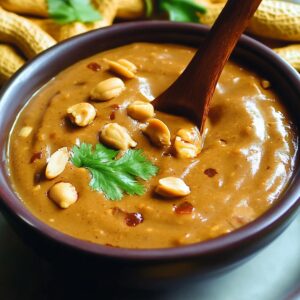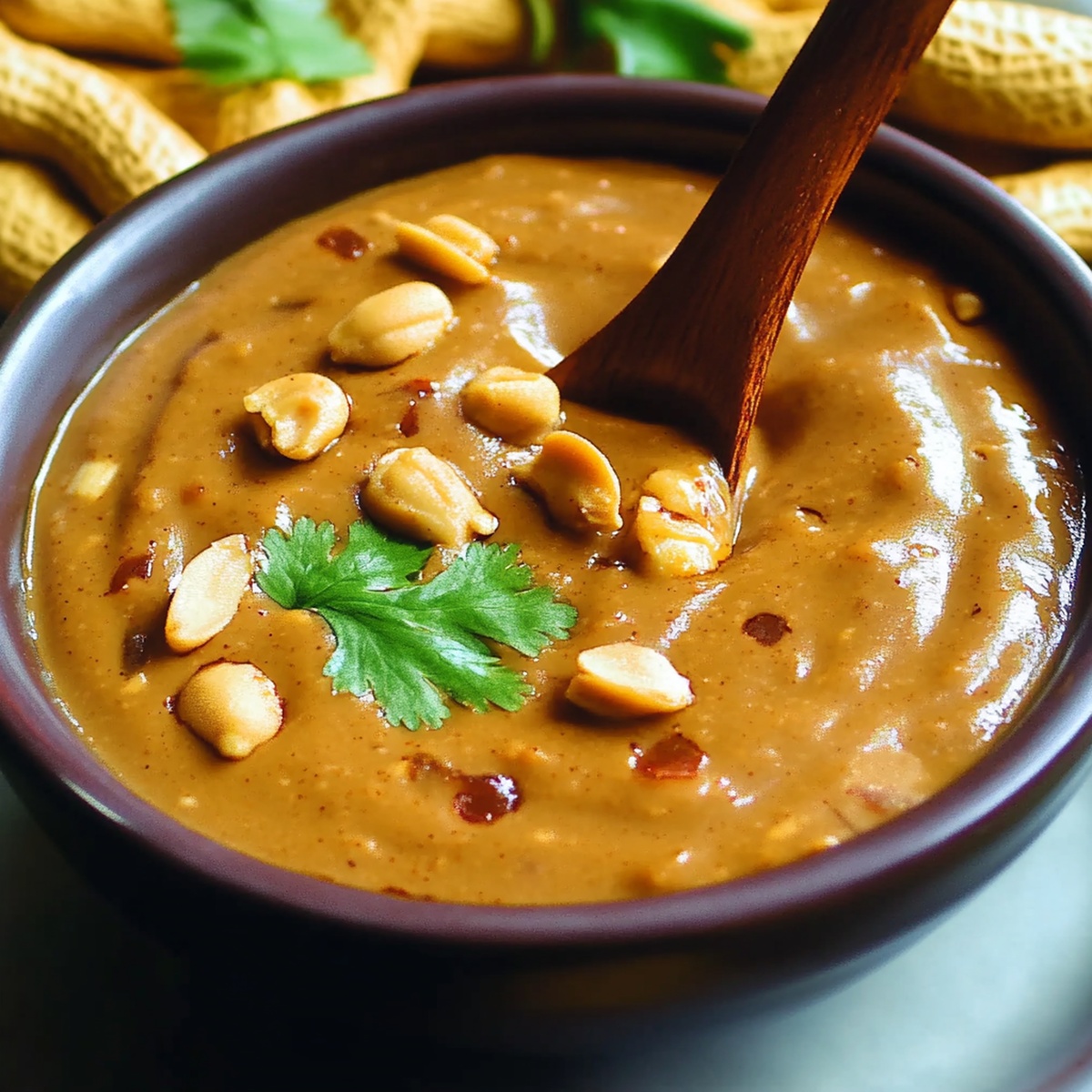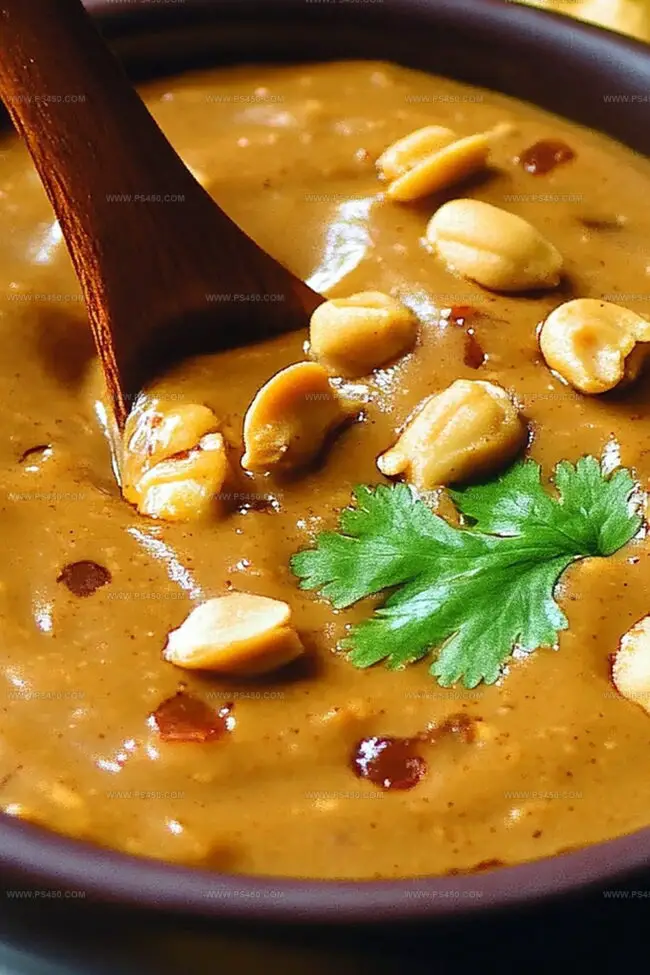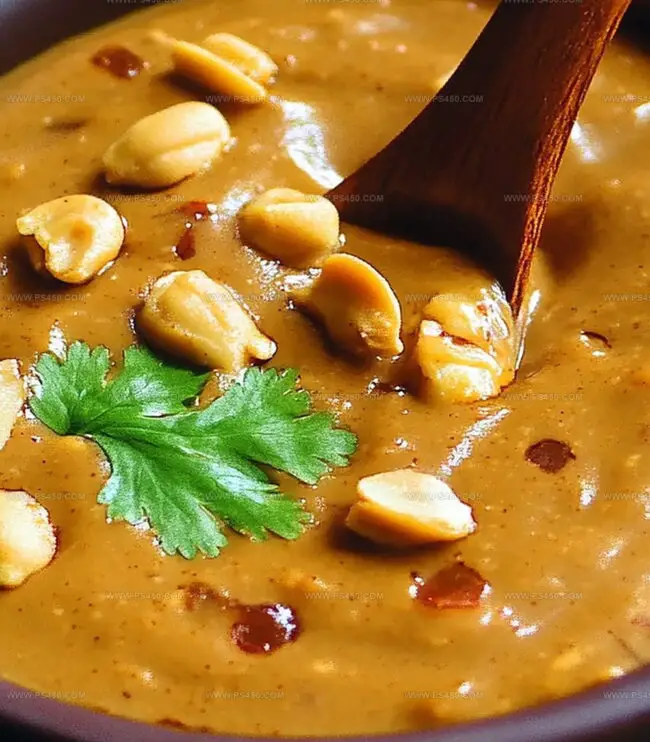Silky Homemade Peanut Satay Sauce Recipe: A Flavor Explosion
Crafting an irresistible spicy peanut satay sauce brings a burst of Southeast Asian flavor to your culinary repertoire.
This vibrant sauce dances with complex layers of heat and richness that elevate any dish.
Creamy peanut butter mingles with fiery chili peppers, creating a tantalizing condiment that awakens taste buds.
Authentic ingredients blend seamlessly, promising a sauce that’s both bold and nuanced.
Each spoonful carries the essence of traditional street food, transporting you to bustling markets of Thailand.
Rich, smooth, and packed with zesty undertones, this sauce transforms ordinary meals into extraordinary experiences.
Prepare to unleash a condiment that will become your new kitchen obsession.
Quick Recipe Overview
Peanut Satay Sauce Ingredients List
For Flavor Base:For Aromatic Enhancement:For Heat and Spice Kick:For Sauce Consistency:Tools for Peanut Satay Sauce
Steps to Make Satay Sauce
Grab your mixing bowl and start combining peanut butter, soy sauce, tangy lime juice, and rich brown sugar. Toss in minced garlic, zesty ginger, a splash of sesame oil, and spicy chili flakes for an incredible taste adventure.
Gradually pour warm water while whisking energetically. Keep stirring until the sauce transforms into a silky, luxurious consistency that coats the back of a spoon perfectly.
Sample your creation and adjust the flavor profile. Want more zing? Add extra lime juice. Craving sweetness? Sprinkle more brown sugar. Seeking heat? Dash in additional chili flakes or sriracha to make your taste buds dance.
Present your masterpiece warm or at room temperature. Use as a mouthwatering dip for vegetables, drizzle over grilled meats, or as a sensational sauce that’ll have everyone asking for your secret recipe.
Tips & Variations for Satay Sauce
Serving Suggestions for Satay Sauce
Store Peanut Satay Sauce Right
Print
Spicy Peanut Satay Sauce Recipe
- Total Time: 5 minutes
- Yield: 5 1x
Description
Homemade peanut satay sauce blends rich Indonesian flavors with creamy, tangy notes. Nutty, spicy, and smooth, this sauce elevates grilled meats and vegetables with authentic Southeast Asian charm.
Ingredients
- ½ cup (120 ml) warm water
- ½ cup (128 g) creamy peanut butter
- 2 tbsps (30 ml) soy sauce
- 1 tbsp (15 ml) lime juice (freshly squeezed)
- 1 tbsp (15 g) brown sugar or honey
- 1 clove garlic, minced
- ½ tsp (2.5 ml) grated fresh ginger (or ¼ tsp ground ginger)
- 1 tsp (5 ml) sesame oil
- ½ tsp (2.5 ml) chili flakes or sriracha (optional, to taste)
Instructions
- Sauce Foundation: Combine peanut butter and soy sauce in a large mixing bowl, whisking vigorously to create a smooth, unified base with rich umami undertones.
- Flavor Layering: Add lime juice and brown sugar, blending energetically to develop a balanced sweet-tangy profile that awakens the palate.
- Aromatic Infusion: Finely mince garlic and ginger, then fold into the sauce, releasing their intense, pungent essences and creating depth of flavor.
- Seasoning Composition: Incorporate sesame oil, chili flakes or sriracha, and a splash of warm water, stirring continuously to achieve a silky, pourable consistency that harmonizes all ingredients.
- Flavor Calibration: Taste and adjust the sauce, fine-tuning with additional lime juice for brightness, sugar for sweetness, or extra chili for a fiery kick.
- Resting Phase: Let the sauce rest briefly, allowing the complex flavors to meld and intensify before serving at room temperature or gently warmed.
Notes
- Balance Flavor Carefully: Start with small amounts of spicy ingredients like chili flakes or sriracha, tasting gradually to control heat intensity without overwhelming the sauce’s nuanced profile.
- Achieve Perfect Consistency: Warm water is crucial for creating a smooth, pourable texture; add incrementally and whisk continuously to prevent separation or clumping of ingredients.
- Optimize Ingredient Quality: Use fresh, high-quality peanut butter without added sugars for an authentic, rich base that provides maximum depth and creaminess to the sauce.
- Customize Dietary Needs: Swap soy sauce with tamari for gluten-free version, use coconut sugar for lower glycemic index, or substitute peanut butter with almond butter for nut-free alternative.
- Prep Time: 5 minutes
- Category: Snacks, Appetizer, Dinner
- Method: Mixing
- Cuisine: Thai
Nutrition
- Serving Size: 5
- Calories: 120
- Sugar: 3 g
- Sodium: 400 mg
- Fat: 10 g
- Saturated Fat: 2 g
- Unsaturated Fat: 8 g
- Trans Fat: 0 g
- Carbohydrates: 7 g
- Fiber: 1 g
- Protein: 4 g
- Cholesterol: 0 mg




John Nicholson
Lead Writer & Recipe Developer
Expertise
Recipe Testing and Development, Kitchen Hacks and Time-Saving Tips, Flavor Pairing and Ingredient Selection, Engaging Food Writing and Storytelling
Education
Johnson & Wales University
John Nicholson honed his skills at Johnson & Wales University, learning how to use fresh, local ingredients and down-to-earth techniques to make cooking simple and satisfying.
His recipes blend Southern comfort flavors with a modern touch, inviting everyone to cook with ease and confidence.
Living in Charleston, John takes cues from the city’s lively food scene, local markets, and seasonal produce. He’s all about making meals stress-free through easy tips, flavor pairings, and fun experiments in the kitchen